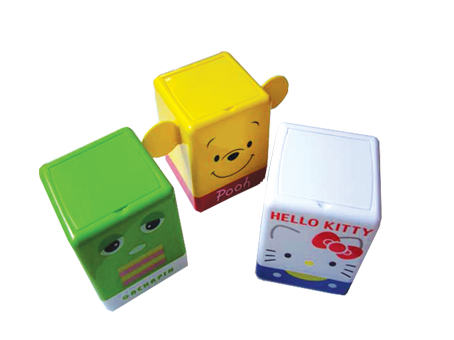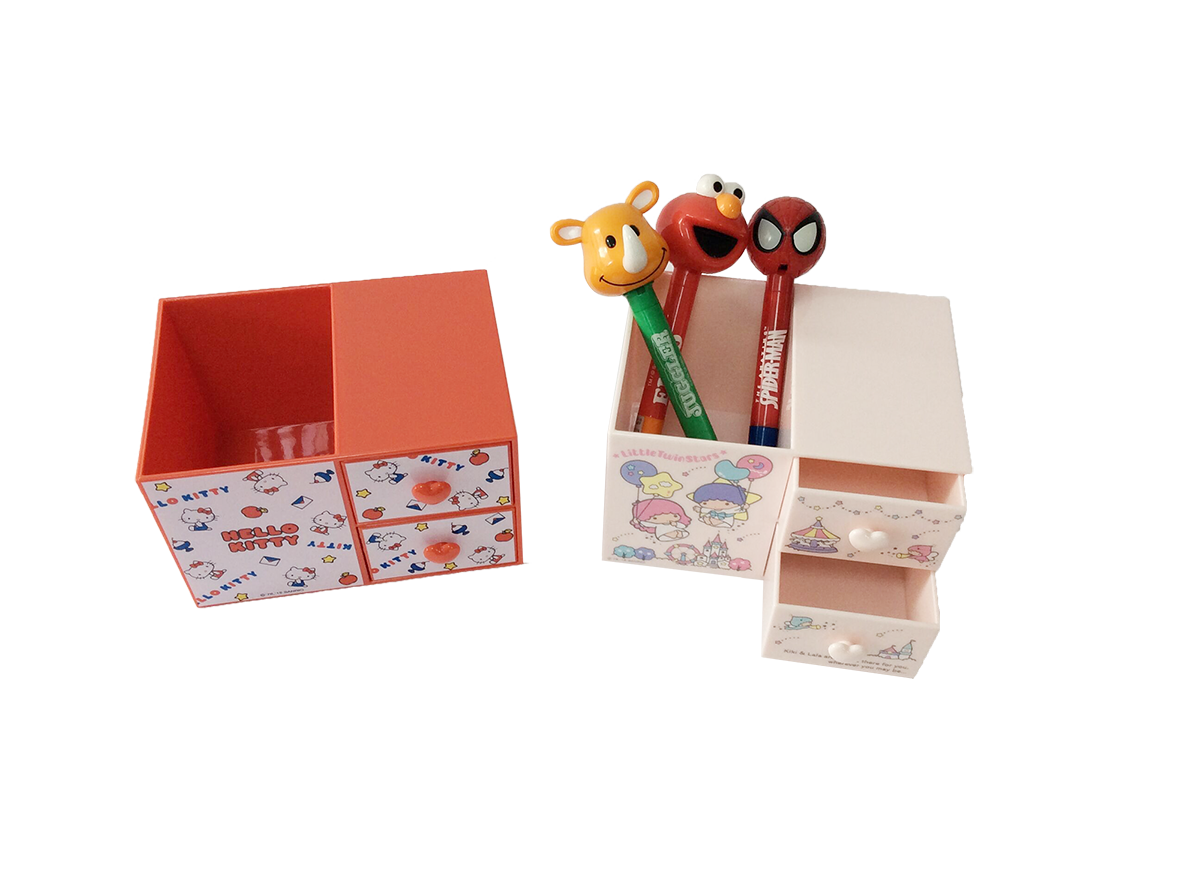Many suppliers of digital printing presses are trying their best to promote their increasingly sophisticated digital printing products. Many printing companies and prepress service companies are also considering investment in this area to enhance the competitiveness of enterprises. However, the cost of digital printing is high or low, and the gap is large. Therefore, investors want to learn from others' practices before investing. Although digital printing currently has many advantages, and digital presses have become the focus of the market for several times, the current application of digital presses in China is not ideal.
At the end of 2003, Heidelberg strategically reorganized and abandoned the digital press market in cooperation with Kodak. In early 2004, Manroland also gave up its digital press with Xeikon. The digital printing market does not do well. It does not mean that the digital printing business cannot do it. In fact, color digital printing is economical. However, to be successful in this area, it is not only feasible that color printing is faster and cheaper. Nowadays, rapidly increasing color digital printing suppliers are beginning to provide more and more value-added services. The advantages of these service projects include: easier connection between the printing shop and the network, simple software tool modules to facilitate beginner users, and content management. Variable data technology support integrates customer relationship management.
Actual business model
Depending on the target markets and services of the printers, the investment in infrastructure is often greater than the previous investment in color digital printing equipment. Printers are devoting themselves to the field of digital printing, not only taking into account the cost of equipment and consumables, but also considering the costs of participating in market competition. From January to July 2003, in a printing industry center, a survey was conducted on the users of 40-bit color digital printing technology, asking them to evaluate the investment needed to develop this business model. The respondents were all owners and managers of companies from different scales who had engaged in this business for varying lengths of time.
The survey includes:
1. Satisfaction with color digital printing business investment;
2. The scope of printing services provided to customers;
3. Value-added services to distinguish printing solutions;
4. The level of staffing and skills necessary to achieve this investment optimisation;
5. The printer's performance, RIP, software and unique solutions.
The survey revealed four clear market models and investment criteria:
1. Fast printers and internal printing companies;
2. Commercial printing and supply chain management;
3. Customized network on-demand services;
4. Fully customized communication.
Investment standards are directly linked to the printer's target market and service categories, and most of the respondents are satisfied with the digital printing business they have and have chosen this market.
Fast printer
Through retail stores, fast printers with color digital printing equipment are focusing their efforts on the delivery of cheaper, faster, and more colorful documents. Services include commercial cards, stationery, plans, and on-demand printing. Manuals and guides, etc. Under the local franchise rights, only limited infrastructure investment is required. In this retail market, most of the fast printers have digital photocopiers working at speeds of 12 to 60 pages per minute, and related RIP technologies. These fast printing centers provide customers with a full range of feature technologies to make them more accessible to consumers.
In general, the franchisor does not need any IT staff's technical support. Through an interview with the American company SirSpeedy and Kinko's (now part of FedEx), the reporter learned that most of the local printers' investment in infrastructure accounted for only 10% of the investment in color digital printing equipment. The company’s headquarters will invest in technical infrastructure and provide local companies with the necessary steps. Local managers often cannot afford to build more service centers and the available digital market models.
Production center
Most of the fast printers do not produce all of the products they sell. In fact, everything from automatic temperature loggers to barrier-type folding machines are agent products. It is understood that Signal Graphics, a subsidiary of Sampa, has decided to reduce its retail store investment and replace it with a production center to integrate manufacturing capabilities. SignalGraphics emphasizes the customer's purchasing power and retention rather than the ability to produce all products for all users. Most of the company's business centers have black-and-white digital copiers, color digital copiers, computers and binding equipment. The company's extremely expensive offset printing equipment is installed in the Denver Center. It is understood that the company plans to increase packaging, transportation and other types of services to create a profit center of operation.
Currently, the US company SirSpeedy has more than 1,100 stores worldwide and plans to develop more than 200 companies in China. At the same time, the company also attracts customers through sirspeedy.com website, which mainly provides online proofing, online reporting, online payment and other services, with an average of more than 1.5 million monthly visits. The company also released a new e-commerce solution, MyDocs. MyDocs can quickly store customer-supplied documents in a secure online catalog for quick sorting. Only need to enter the user name and password, the user can get business cards, notes, product manuals, manuals and guides and other electronic documents within 24 hours. It is understood that in 2002 alone, MyDocs has more than 7000 new users.
Internal printing factory
In-house printing emphasizes quality, speed, price, and convenience, and it increases with the increase in short-lived coloring. The initial technology investment such as color digital copiers, this equipment is mainly provided by Canon and Fuji Xerox. The core software services include transmission, classification, evaluation and storage management of electronic documents, as well as proofing, design, imposition, chromatic printing and pre-proofing.
According to an authoritative magazine survey, of the 273 companies surveyed, only 12.5% ​​of enterprises can provide Internet services, and only 10.5% of enterprises can provide variable data printing.
Typical in-house printers believe that variable data printing is difficult to implement and market demand is much less than initially expected. Due to the initial emphasis on end-user file transfers supporting color digital copiers and RIP technology, it was tantamount to limiting investment in infrastructure.
Digital storefront
Due to the need for different end-user services, a typical in-house printing company would need to invest an additional $0.30 in infrastructure for every dollar spent on color digital devices, but now this situation has begun to change. Recently, Duke University and Perimeter College of Georgia purchased a HP Indigo 1000 digital printing device, and Louisiana State University and Washington World Bank have also purchased the NexPress 2100 unit. The goal of investing in these devices is to no longer use offset printing, but to classify it as a kit when needed. The company's internal printing plant plans to begin the establishment of an electronic toolkit and then digitally print, thereby reducing external procurement and labor costs. So they started to build "digital storefronts," where customers can request online purchases of electronic documents so that they can be personalized in a scheduled time.
Commercial printers and supply chain connections
Traditional commercial printers initially focused their investment in color digital printing on short-term, fast on-demand business and used color digital printing technology to achieve the final lithographic quality. However, for the simple reproduction of the same image, there is profit only if the number of prints exceeds 500 sheets of A3 format.
Online placards and double-sided printing allow printers to fully proofread the printed booklet and loose-leaf cover, which prepares them for delivery, trimming and final finishing. In order to meet the demand for repeated on-demand printing, many companies in this area have the right to contact the relevant sales materials and document databases online in order to make the sales materials become an integral part of the customer supply chain.
For example, companies such as Great Lakes Cos., LaVignePress, etc. started with commercial printing, but soon they also introduced color digital printing technology, combining color short-run printing and supply chain management functions to promote materials. LaVignePress provides a brand-new integrated solution to observe the printing and incidental industries. Users can print version management, proofing, shipment, progress tracking, etc., at any time and any place. Users can use the requested data. Traditional lithographic printing presses or printing with HP Indigo digital presses. Great Lakes Cos.'s AKSESS system supports the management, organization, completion, and distribution of traditional lithographic documents. In January 2003, the company purchased the NexPress 2100 digital press. In less than six months, the company generated profits in the case of one and a half classes a day. Dean Haniko, director of technology department at Great Lakes Cos., said: “We have developed software for customers to simplify the process; according to the company’s traditional services, our interaction with customers is very frequent. In addition to color digital printing, we Many services can also be provided to enhance the advantages of digital printing technology."
Priority proposal
For online print supply chain management, priority proposals include a satisfactory currency relationship, inventory management, and a decreasing list of backlogs. For print service providers, integrating customer supply chains means that customer loyalty really improves because it determines the investments made by customers and printers. Currently, LaVignePress is working with Printable Technologies to simplify the customer interface software, and GreatLakes is also developing its own AKSESS system. For each printer spending $1 on printing equipment, another $1 would be spent on infrastructure such as software and employee reserves.
Network on-demand service
In fact, the ideal network on-demand service must be able to allow customers to create their own printed products on the web. These systems provide a convenient and fast browser interface, enabling the sales, trading, and customer service departments to formulate specific groups of incidental industries, and then personalize them based on customer data in the database. For a national company, its branches need to take care of the characteristics of the domestic market and the differences.
Digital printers such as Lexinet, which are growing rapidly, believe that this market model is very successful. DanAdler and LisaBoyer joined the digital printing field in 1991 and established their own company based on their direct marketing background and understanding of technology. They provide agency, personalization, and localization services for users everywhere through on-demand direct mailing. The company uses Fuji Xerox's DocuTech and DocuColor equipment to print its own established materials for large insurance and real estate companies that have external agencies. This plan was quite successful, with revenue increased by 34% in 2002.
Combining marketing programs with digital printing
RTAssociation into
Today, Plastic Boxes are widely used, controllable in shape, and inexpensive. Just like Plastic Gift Boxes, Plastic Storage Boxes, Plastic Stationery Boxes, Plastic Jewelry Boxes, etc., more and more industries choose plastic boxes to package, store and display their products. Plastic materials can be selected according to different use environments, such as ABS, PC and so on.
The plastic box is one of the main products of our company. Our professional team has rich experience in the production and research of plastic boxes. We can provide customized services for plastic boxes.
Plastic Storage Boxes

Plastic stationery boxes

Plastic Boxes
Plastic Boxes,Storage Boxes,Plastic Storage Bins,Clear Plastic Box
Triple C International (Shenzhen) Co.,Ltd. , http://www.CCC-Triple.com